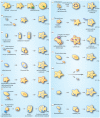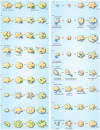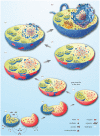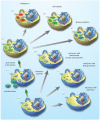Endosymbiotic theories for eukaryote origin
- PMID: 26323761
- PMCID: PMC4571569
- DOI: 10.1098/rstb.2014.0330
Endosymbiotic theories for eukaryote origin
Abstract
For over 100 years, endosymbiotic theories have figured in thoughts about the differences between prokaryotic and eukaryotic cells. More than 20 different versions of endosymbiotic theory have been presented in the literature to explain the origin of eukaryotes and their mitochondria. Very few of those models account for eukaryotic anaerobes. The role of energy and the energetic constraints that prokaryotic cell organization placed on evolutionary innovation in cell history has recently come to bear on endosymbiotic theory. Only cells that possessed mitochondria had the bioenergetic means to attain eukaryotic cell complexity, which is why there are no true intermediates in the prokaryote-to-eukaryote transition. Current versions of endosymbiotic theory have it that the host was an archaeon (an archaebacterium), not a eukaryote. Hence the evolutionary history and biology of archaea increasingly comes to bear on eukaryotic origins, more than ever before. Here, we have compiled a survey of endosymbiotic theories for the origin of eukaryotes and mitochondria, and for the origin of the eukaryotic nucleus, summarizing the essentials of each and contrasting some of their predictions to the observations. A new aspect of endosymbiosis in eukaryote evolution comes into focus from these considerations: the host for the origin of plastids was a facultative anaerobe.
Keywords: anaerobes; endosymbiosis; eukaryotes; mitochondria; nucleus; plastids.
© 2015 The Authors.
Figures




References
-
- Koonin EV. 2012. The logic of chance: the nature and origin of biological evolution. Upper Saddle River, NJ: FT Press.
Publication types
MeSH terms
LinkOut - more resources
Full Text Sources
Other Literature Sources
